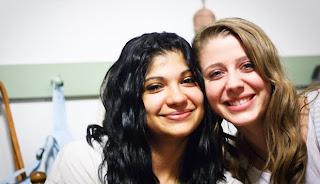
People who spend time with happy people are more likely to become happy themselves. That’s according to a July 2010 study that examined how emotions spread contagiously.
David Rand: The more friends you have that are content with their lives, the more likely you are to become content. And the more friends you have that are discontent, the more likely you are to become discontent.
David Rand of Harvard is one of the study’s authors. He said this study was designed to understand how changes in long-term emotional states – meaning, whether you consider yourself a happy or sad person overall – are affected by the people you know.
We found that sadness is twice as infectious as happiness.
Rand and his co-authors compared emotional states of groups of friends, families, and coworkers to models of how infectious diseases – like the flu – spread. Then they looked at the probability that a person would become happy or become sad, based on the number of happy or sad people around them.
One aspect that’s new is that we showed in a formal sense that these long-term emotional states really are contagious. Which is interesting, and it’s important for trying to understand why people feel the way they do about their lives. Rand said that understanding the “contagious” aspect of emotions was key to the study.
A contagious process is something where your probability of contracting it--if it’s a disease--depends on whether your friends are sick. If you think about your probability of catching the flu, the more sick friends you have the more likely you are to get the flu. That makes it contagious. So we find that same thing with happiness or sadness.
Rand and his co-authors used data from the Framingham Health Study, which has been collecting health and social information from the community of Framingham, Massachusetts, for the past 40 years. They deduced the real-life social networks of the town based on information the study participants filled out about their family, work, and contacts. The information about emotions came from a standard 20-question psychology survey that categorizes people as happy, sad, or neutral.
In order to ask whether the process is infectious or not, you want to know, if you are in a “neutral” state, is there a probability of switching from neutral to happy increasing in your number of happy friends? So we took all the people who were neutral, in the first measurement wave, and we asked how many of them had zero happy friends. We looked at all the people who had no happy friends, and asked how many of them switched from neutral to happy. Okay, what about all the people had one happy friend, two happy friends, and so on.
They found that, like the flu, the more friends a person had who were happy, the more likely the person was to become happy themselves. Additionally, they found that sadness was more transmissive than happiness – meaning, it takes fewer sad friends to make you become sad. But Rand added that people recover from sadness more quickly than they recover – or change states – from being happy.
So dump all those sad sacks, and get on the Happy Train, folks! Happy Holidays...later Scrooge!!!
